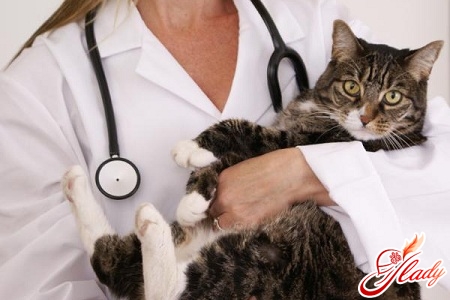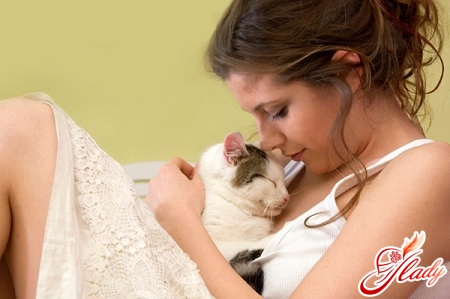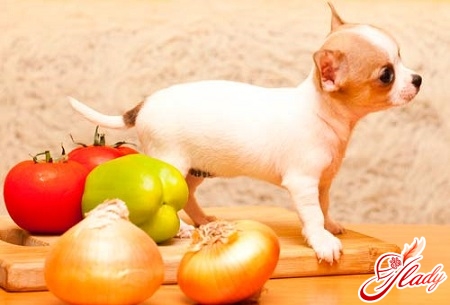 If you have found yourself a reliable and faithful friend -a dog, then you simply need to know all the intricacies of its feeding. Not only the health of the animal, but also its lifespan depends on this. We will help you answer many questions regarding the maintenance of a pet. What to feed a dog, how many times a day to feed it, is dry food useful or harmful - all this and much more you will find in this article.
If you have found yourself a reliable and faithful friend -a dog, then you simply need to know all the intricacies of its feeding. Not only the health of the animal, but also its lifespan depends on this. We will help you answer many questions regarding the maintenance of a pet. What to feed a dog, how many times a day to feed it, is dry food useful or harmful - all this and much more you will find in this article.
Feeding a pregnant dog
If your dog is about to have puppies, thenthe question arises - how many times a day does she need to eat. Starting from the 4th to the 6th week, the number of feedings should be increased to 3 times. It is imperative to give cottage cheese, cheese, fish, meat, milk porridge, boiled egg. The food of a pregnant dog should include various minerals, especially calcium. The daily intake rate is 65-70 mg per 1 kg of weight, and phosphorus - 50-55 mg. What to feed a dog when the second half of pregnancy begins? At this time, you should reduce carbohydrate foods in the diet and add mashed raw vegetables and fruits. It is also useful to add bone meal to food: in the amount of two tablespoons per day. If the pregnancy occurred in winter, be sure to give the animal vitamins A and D. And starting from the 8th week, transfer the dog to four meals a day. It is advisable to exclude bones and other products from its diet that complicate intestinal peristalsis. To prevent postpartum eclampsia (toxicosis), it is better to replace meat with boiled fish, necessarily of marine origin. 150 g of fish replaces 100 g of meat. Do not give pasta, potatoes, legumes, pearl barley, since this food overloads the animal's digestive tract. In the last days before labor, exclude from the diet all products that can cause allergic reactions in the dog, and reduce the amount of food by ¼. If the animal loses its appetite, try to attract it with tasty morsels. Once labor is over, increase the diet and switch to four meals a day.
Feeding the nursing dog
How to feed a dog after giving birth?During the first day, it is recommended to give her semi-liquid fermented milk food. Water should always be nearby and fresh. You should not feed the dog meat in the first week after giving birth, since such food can provoke eclampsia - toxicosis. The diet of a nursing dog should be high-quality and high-calorie, include vegetables, cereals, and fermented milk products. After a week, a small amount of meat can be introduced into the diet. Feeding a nursing dog is carried out at least 3 times a day, including calcium supplements. Feeding a dog raw meat is undesirable, since it may contain worms that will be passed on to the puppies. Therefore, you should boil the meat for at least a couple of minutes or, at worst, scald it with boiling water. Special attention should be paid to the diet of a nursing dog, because she loses more calories and nutrients, giving them to her puppies with milk.
Feeding the puppies
How much food do puppies need when they stop sucking their mother's breast? This question is also very important for dog breeders.
- From 1.5 to 2 months, prepare small portions of food and feed the puppies every 3 hours (6 times a day);
- After 2 months, the number of feedings is reduced to 5 times, while increasing the amount of food;
- In 4-5 months of the puppy fed 4 times a day, 6-7 months - 3 times a day;
- After a year the dog is transferred to a two-time feeding.
About how many times you need to feed a dog before it's one year old,you already know, and now let's figure out what is the best food for a puppy. After all, at this time, its skeleton is formed, teeth and fur grow. And a lack of essential substances can cause rickets and other diseases. The puppy's diet should include: low-fat cottage cheese, egg yolk, lean meat. For shiny fur, you should give vitamin D (as a food supplement) and vegetable oil. From 2 months, it is useful for puppies to be given a small amount of cartilage, and at 4-5 months, you can already add soft beef bones. And vegetables must be included in the diet. They can be given both boiled and raw, after grating. Once a week, puppies should be given boneless sea fish.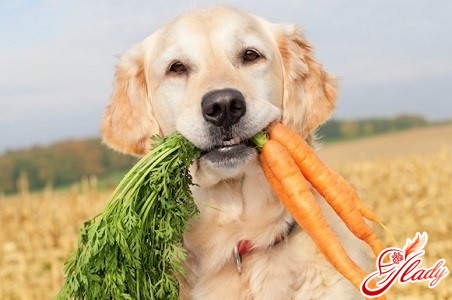
Dry food
Dry food should also be mentioned. It is divided into three categories:
- Products of economy class - are of poor quality;
- Medium-product - average quality;
- The premium product is the highest quality.
The natural question arises: what kind of food?better and how many times a day to feed them to the animal. Naturally, it is best to use the highest quality feed, but not all of them contain animal proteins. When choosing, pay attention to the annotation, which indicates the composition of the feed. When deciding how to properly feed a dog with dry food, do not forget that you should not add other products. Often our choice depends on financial capabilities. But in any case, try to choose a well-balanced product containing a sufficient amount of proteins, amino acids, fats and other useful substances.
Feeding an adult dog
The dog's digestive system is structured likein predatory animals. It does not chew, but tears off and swallows pieces of meat. Developed jaws need such work, mashed food and semolina porridge are not suitable for them. A predator living in the wild eats its prey whole. The best treats for a dog are cartilage and soft bones. Bones should be large, preferably beef. In no case should you give a dog tubular or bird bones. Small fragments can injure the esophagus and stomach. By gnawing on a bone, an animal not only strengthens its teeth, but also replenishes its body with mineral salts. What kind of meat should you feed an adult dog? And how much meat can it eat? Feed your pet raw beef once a week. Just make sure the product is fresh. It is not recommended to give pork to a dog, since veterinarians say that pigs can suffer from diseases that are not transmitted to humans, but are dangerous for pets. If the animal is not allergic to chicken protein, you can sometimes give it boiled chicken, mixed with vegetables or porridge: buckwheat, millet, oatmeal, rice. Rolled oats can be given to both puppies and adult dogs, soaking it in broth, kefir or milk. Liver in small quantities (5-15 g) is added to the animal's diet to replenish vitamins A, E, D. Offal (kidneys, liver, udder and heart) contain various useful substances, but they should be boiled.
Nutrition for elderly dogs
Since one of the main problems of agingdogs is obesity, then feed your pets more often, but in small portions. It is best to divide the daily ration into 2-4 times. It is advisable to heat the food to the animal's body temperature - 38 degrees Celsius. The food should be balanced and not inhibit the functions of the heart and kidneys. It is advisable to reduce the amount of protein food. If you have given the animal fish since childhood, then continue to do so now, but not more than 1-2 times a week. How to feed dry food to dogs in old age? Dietary rations are made by veterinarians taking into account age-related changes in animals. Aging dogs often have otitis, cataracts, periodontal disease, arthrosis, pulmonary and cardiovascular diseases, urinary incontinence. And during this period, the owner should closely monitor the health of his pet in order to recognize the disease in time and begin treatment.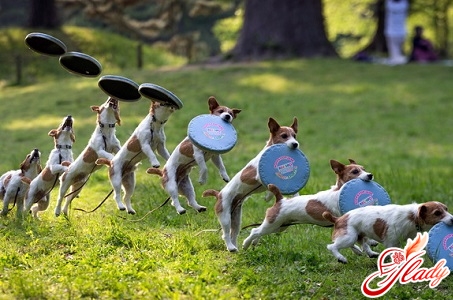
Feeding a sick dog
Naturally, during illness, food should beeasily digestible and nutritious. But some diseases require a special diet. You should feed your pet more often, but the portions should be small. For example, with allergic dermatitis, the meat should be lean, you can’t give meat broths and other fatty foods. Never treat your pet with sweets. Only following a diet will be the key to successful treatment. A dog’s tendency to allergies often occurs due to improper nutrition. And during the treatment, specialists prescribe low-calorie hypoallergenic food. After all the symptoms disappear, one product is introduced into the animal’s diet at a time. In this way, you can identify the allergen. When a product dangerous for the animal is identified, it should be permanently excluded from the diet. Most often, dogs are allergic to dairy products and pork. As a result of improper nutrition, the animal may develop diabetes mellitus, as a complication after pancreatitis or a tumor of the pancreas. Pets who have been diagnosed with diabetes should eat foods containing a small amount of fats and carbohydrates, but rich in vitamins, proteins and minerals. Dog breeds susceptible to this disease include: Australian Terrier, Pug, Keeshond, Miniature Poodle, Beagle, Zwergschnauzer. For such dogs, it is best to use only natural ingredients. The diet involves the animal eating lean meat and fish. You can add fresh vegetables, fruits and feed dogs raw meat, but everything should be within reasonable limits. Buckwheat and rolled oats are allowed. But it is better to exclude peeled rice. If your dog has been poisoned, it is better not to feed it at all during the first 24 hours after the disease has subsided, but give it plenty of water. Then you can try rice broth. After your pet has an appetite, give it some boiled rice porridge in chicken broth. Gradually add well-cooked and finely chopped meat to the diet: chicken or veal. A little later, you should add fish. Naturally, these should be low-fat varieties of sea or ocean fish - cod, pollock, salmon, hake.
Ration for hunting dogs
Hunting dogs are:Large breeds - greyhounds; Medium breeds - hounds, pointers and huskies. Small breeds - spaniels, dachshunds, fox terriers. How much carbohydrates, proteins, fats, vitamins and mineral salts should food contain for the animal to develop properly? Let's try to answer this question. The daily requirement of an adult hunting dog is: proteins 4-5 g per 1 kg of weight, fats 2-3 g per 1 kg of weight, carbohydrates 12-15 g. For these breeds, food should be high in calories, the needs of each animal depend on physical activity and ambient temperature. If the animal is kept outdoors, then the fat content should be increased, if the dog does long physical work, then focus on proteins and carbohydrates. The diet of hunting dogs should be varied. Meat and offal, fresh fish are especially valuable for them. For puppies and nursing animals, cottage cheese, milk, buttermilk will be good nutritious food. Vegetables and greens are essential products in the diet of hunting dogs. How many times should you feed such dogs? Adult animals should be fed 2-3 times a day: early in the morning, at lunchtime and around 6 p.m. Do not forget to add mineral supplements: bone meal, fish oil, ground chalk, eggshells.
Ration for fighting dogs
Dogs with fighting qualities include:Alabai, pit bull terriers, Rottweilers, Staffordshire terriers, boxers. What to feed a fighting dog so that it is strong and hardy? Both natural products and dry food are suitable. It is best to buy high-quality food. Protein food should be present in the diet of puppies and adult dogs every day. It is needed to build muscle fibers and bones, as well as for the activity of animals. There is no particular difference in the diet of large and medium dogs. Sometimes small breeds require higher-calorie food to maintain vitality. The main thing to remember is that meat products are the main ones in the diet of such a dog. They should be given both raw and cooked. The topic of feeding dogs is extensive. The main thing here is not to make mistakes, because the health and life expectancy of your pet depends on proper nutrition. It is good if the same veterinarian observes the dog from infancy. You can always consult with him on any issue. We advise you to read:






